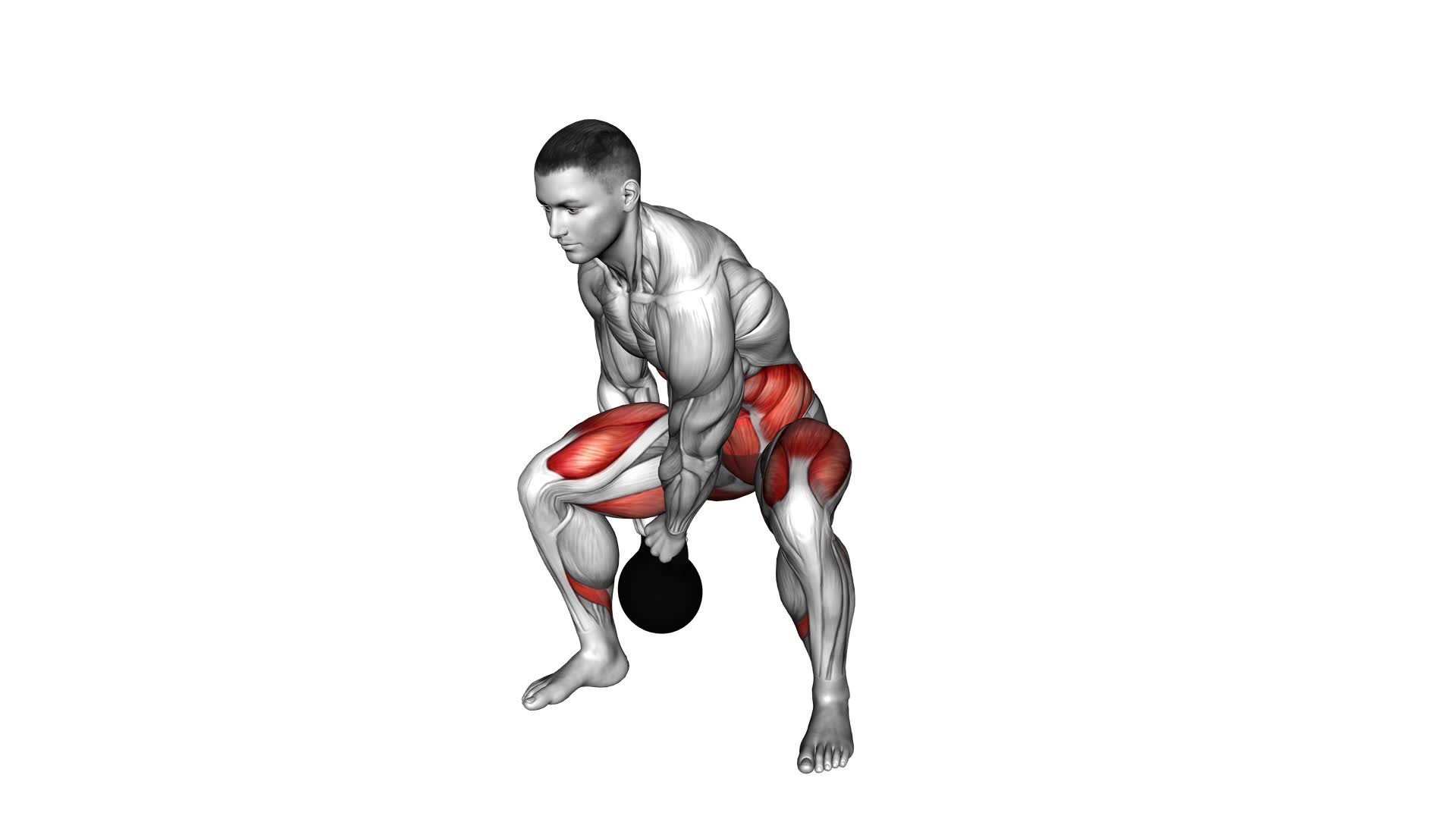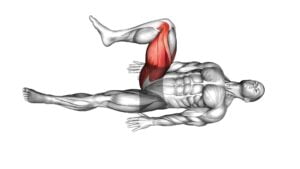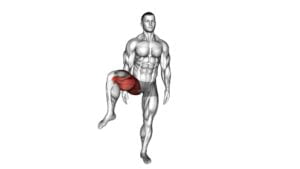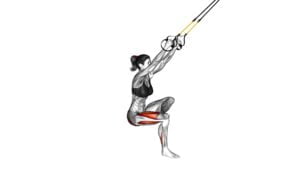Kettlebell Figure 8 – Video Exercise Guide & Tips

Get ready to sculpt your core and strengthen your arms with the Kettlebell Figure 8 exercise!
Watch This Exercise Video
This video exercise guide will walk you through the proper form and technique, as well as provide tips for beginners and ways to increase the intensity.
Avoid common mistakes and maximize your workout with this effective kettlebell exercise.
Let's get started!
Key Takeaways
- The Kettlebell Figure 8 activates multiple muscle groups simultaneously.
- Proper form and technique are crucial to prevent injury and maximize effectiveness.
- Beginners can modify the exercise by using lighter weights and focusing on form.
- Increasing intensity can be achieved by using heavier weights and maintaining proper form.
Benefits of the Kettlebell Figure 8
To maximize your workout, the Kettlebell Figure 8 offers a multitude of benefits that can help improve strength, coordination, and endurance. One of the key benefits of this exercise is its ability to activate multiple muscle groups simultaneously. As you perform the Figure 8 movement, you engage muscles in your arms, shoulders, core, and legs. This comprehensive muscle activation not only helps to build strength but also improves overall muscle coordination.
In addition to muscle activation, the Kettlebell Figure 8 is an excellent exercise for improving cardiovascular endurance. The continuous, fluid motion of the exercise elevates your heart rate and challenges your cardiovascular system. By incorporating this exercise into your routine, you can effectively improve your cardiovascular fitness and increase your stamina.
The Kettlebell Figure 8 also offers the advantage of being a full-body exercise. It targets multiple muscle groups and requires coordination between your upper and lower body. This integrated movement helps to improve overall body strength and coordination, making it an efficient and effective workout option.
Proper Form and Technique
Start by positioning your feet shoulder-width apart and gripping the kettlebell with both hands.
To ensure proper form and technique while performing the kettlebell figure 8 exercise, keep the following points in mind:
- Engage your core: Throughout the exercise, maintain a strong core by pulling your belly button in towards your spine. This will help stabilize your body and prevent any unnecessary strain on your lower back.
- Maintain a neutral spine: Avoid rounding or arching your back during the movement. Keep your spine in a neutral position to protect your spine and promote good posture.
- Use your hips, not your arms: The power for the figure 8 movement should come from your hips, not your arms. Initiate the movement by hinging your hips back and forth, allowing your arms to follow the motion naturally.
By following these guidelines, you can ensure proper technique and maximize the effectiveness of the kettlebell figure 8 exercise. Avoid common mistakes such as relying solely on your arms or compromising your form.
Remember to start with a light kettlebell and gradually increase the weight as you become more comfortable with the movement.
Modifications for Beginners
If you're new to the kettlebell figure 8 exercise, try incorporating modified variations to gradually build strength and improve your technique. Beginner modifications can help you ease into the exercise and prevent any potential injuries.
Safety precautions are important, especially when starting a new exercise routine.
One modification for beginners is to use a lighter kettlebell. This will allow you to focus on your form and technique without straining your muscles. Start with a weight that feels comfortable for you and gradually increase as you get stronger and more comfortable with the movement.
Another modification is to slow down the pace of the exercise. Instead of rushing through the figure 8 motion, take your time and focus on each movement. This will help you maintain control and reduce the risk of injury.
It's also important to listen to your body and take breaks when needed. If you start to feel fatigued or experience any pain, stop and rest. Pushing through discomfort can lead to injury, so it's better to take it slow and progress at your own pace.
Tips for Increasing Intensity
To increase the intensity of the kettlebell figure 8 exercise, challenge yourself by using a heavier kettlebell. Increasing the weight of the kettlebell will make your muscles work harder and help you build strength more effectively.
Here are three tips for increasing intensity and getting the most out of your kettlebell figure 8 workout:
- Gradually increase weights: Start with a kettlebell that's challenging but manageable for you. As you become more comfortable with the exercise, gradually increase the weight of the kettlebell to continue challenging your muscles.
- Use proper form: Maintaining proper form is crucial for maximizing the intensity of the exercise. Make sure to engage your core, keep your back straight, and perform the figure 8 movement smoothly and controlled.
- Track your progress: Keep a record of the weights you use and the number of repetitions you can perform. Tracking your progress will help you set goals and push yourself to increase the intensity over time.
Common Mistakes to Avoid
To avoid common mistakes while performing the kettlebell figure 8 exercise, focus on maintaining proper form throughout the movement. One common mistake to avoid is hunching your back. It's important to keep your back straight and engaged throughout the exercise to prevent injury and maximize the benefits.
Another mistake is swinging the kettlebell too forcefully. Remember, the figure 8 movement should be controlled and fluid, not jerky or erratic. Using excessive force can lead to strain or injury.
Additionally, be mindful of your hand placement. Make sure you have a secure grip on the kettlebell, holding it by the handle with both hands. Avoid gripping the sides of the kettlebell or letting it slip out of your hands.
Lastly, pay attention to the alignment of your knees and feet. Keep your knees slightly bent and your feet shoulder-width apart to maintain stability and support during the exercise.
Frequently Asked Questions
How Many Calories Can You Burn With the Kettlebell Figure 8 Exercise?
You can burn a significant number of calories by doing the kettlebell figure 8 exercise. This exercise engages multiple muscle groups, including your core, arms, and legs, resulting in a higher calorie burn compared to isolated exercises.
In addition to calorie burn, the kettlebell figure 8 offers other benefits such as improved coordination, stability, and strength. So if you're looking to burn calories and improve overall fitness, incorporating the kettlebell figure 8 into your routine is a great choice.
Can the Kettlebell Figure 8 Help Improve Grip Strength?
Improving your hand strength is essential for various activities. The kettlebell figure 8 exercise can be an effective way to achieve this. By incorporating this exercise into your routine, you can reap the benefits of improved grip strength.
The figure 8 motion targets the muscles in your hands, wrists, and forearms, helping to increase their strength and endurance. This exercise is a great addition to any workout regimen for those looking to enhance their grip.
Is It Safe to Perform the Kettlebell Figure 8 Exercise if I Have a Lower Back Injury?
Yes, the modified kettlebell figure 8 exercise can be suitable for individuals with lower back injuries. By modifying the movement and using lighter weights, you can avoid straining your lower back.
It's important to maintain proper form, engage your core, and listen to your body during the exercise. Consulting with a fitness professional or physical therapist can provide you with specific modifications tailored to your injury.
Always prioritize your safety and consult with a healthcare professional before starting any new exercise routine.
Can the Kettlebell Figure 8 Exercise Help With Core Stability and Balance?
The kettlebell figure 8 exercise is a great way to improve your core strength, stability, and balance. By incorporating kettlebell exercises like the figure 8 into your routine, you'll be able to target and strengthen the muscles in your core, helping to improve your overall stability and balance.
This exercise is a challenging yet effective way to enhance your core strength and improve your overall fitness level.
What Are Some Variations of the Kettlebell Figure 8 Exercise That Can Target Different Muscle Groups?
There are several variations of the kettlebell figure 8 exercise that can target different muscle groups.
For the upper body, you can try the single-arm figure 8, where you pass the kettlebell from one hand to the other in a figure 8 motion. This works your shoulders, arms, and upper back.
For the lower body, you can do the figure 8 lunge, where you perform a lunge while passing the kettlebell through your legs. This targets your glutes, quads, and hamstrings.
Conclusion
In conclusion, the kettlebell figure 8 exercise is a fantastic way to improve core stability, coordination, and upper body strength. By following proper form and technique, beginners can gradually work their way up to more advanced variations.
To increase the intensity of the exercise, try using a heavier kettlebell or adding a squat at the end of each repetition. Remember to avoid common mistakes such as rounding the back or using momentum.
Keep practicing and enjoy the benefits of this effective exercise.

Author
Years ago, the spark of my life’s passion ignited in my mind the moment I stepped into the local gym for the first time. The inaugural bead of perspiration, the initial endeavor, the very first surge of endorphins, and a sense of pride that washed over me post-workout marked the beginning of my deep-seated interest in strength sports, fitness, and sports nutrition. This very curiosity blossomed rapidly into a profound fascination, propelling me to earn a Master’s degree in Physical Education from the Academy of Physical Education in Krakow, followed by a Sports Manager diploma from the Jagiellonian University. My journey of growth led me to gain more specialized qualifications, such as being a certified personal trainer with a focus on sports dietetics, a lifeguard, and an instructor for wellness and corrective gymnastics. Theoretical knowledge paired seamlessly with practical experience, reinforcing my belief that the transformation of individuals under my guidance was also a reflection of my personal growth. This belief holds true even today. Each day, I strive to push the boundaries and explore new realms. These realms gently elevate me to greater heights. The unique combination of passion for my field and the continuous quest for growth fuels my drive to break new ground.







